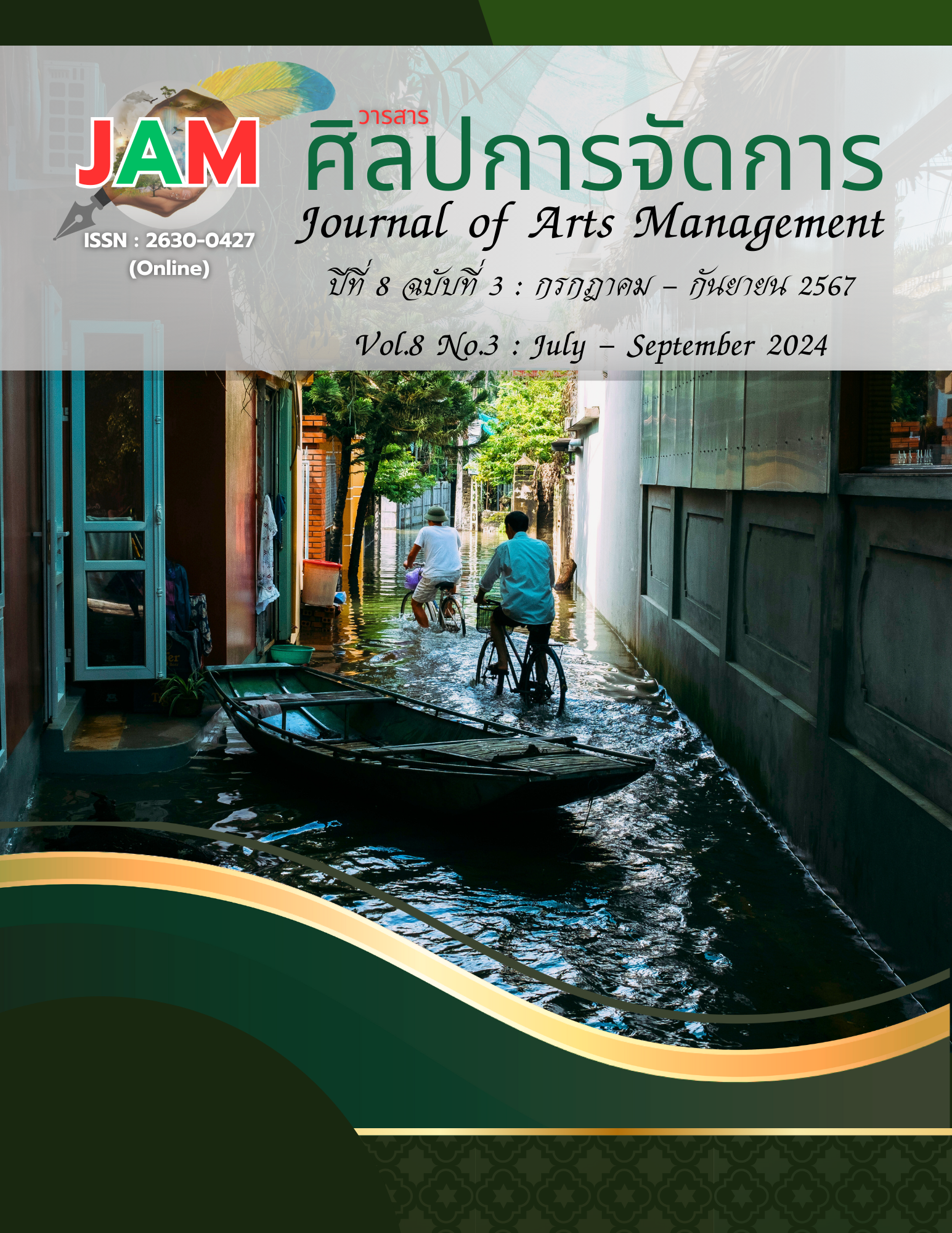มโนทัศน์การประยุกต์ใช้สมาธิเพื่อบรรเทาปัญหาสังคมได้อย่างเป็นรูปธรรม
Main Article Content
บทคัดย่อ
ขอขอบคุณ มหาวิทยาลัยเกษตรศาสตร์ ภายใต้โครงการส่งเสริมการสร้างผลงานทางวิชาการ (Kasetsart University's Academic Development Promotion Project (KU-ADPP-66))
บทความวิจัยนี้มีวัตถุประสงค์เพื่อ 1) ศึกษาแนวคิดการฝึกสมาธิในพระพุทธศาสนากับการลดระดับกิเลสของมนุษย์ 2) ศึกษาปัญหาสังคมและแนวทางแก้ไข 3) วิเคราะห์ความสัมพันธ์และสังเคราะห์มโนทัศน์ระหว่างการฝึกสมาธิกับการบรรเทาปัญหาสังคมเพื่อประยุกต์ใช้อย่างเป็นรูปธรรม ซึ่งเป็นงานวิจัยเชิงเอกสาร ผลการวิจัยพบว่า 1) สมาธิมี 2 ลักษณะ คือ สมถะและวิปัสสนา พระพุทธองค์ตรัสว่า กิเลส หรือ อกุศลมูล 3 (โลภะ โทสะ โมหะ) คือ รากเหง้าที่แท้จริงของปัญหาทั้งมวล ทำให้มนุษย์เป็นทุกข์เบียดเบียนผู้อื่น โดยเฉพาะ โมหะ ซึ่งเครื่องมือที่ใช้กำจัดได้โดยตรง คือ สมาธิ เนื่องจากสภาวะจิตตั้งแต่ระดับอุปจารสมาธิ (ขั้นสมถะ) นั้นเกิดองค์ฌาน 5 กำจัดนิวรณ์ 5 เกิดความสุขสงบ จิตบริสุทธิ์ หยุดนิ่ง มั่นคง เข้าสู่วิปัสสนาขจัดสังโยชน์ 10 หมดกิเลสในที่สุด ดังนั้นเมื่อสมาธิกำจัดกิเลสในใจมนุษย์ได้ ปัญหาสังคมซึ่งมีสาเหตุมาจากมนุษย์ที่มีกิเลสจึงบรรเทาลงได้ 2) ปัญหาสังคม คือ ความเสียระเบียบของสังคมกระทั่งคนหมู่ใหญ่รับรู้และหาทางแก้ไขร่วมกัน แบ่งเป็นหลายประเภทและมีแนวทางการแก้ปัญหาตามลักษณะของปัญหาที่เกิดขึ้น ซึ่งเป็นการแก้ไขปัญหาที่ปลายเหตุหรือจากมิติภายนอกเท่านั้น ยังขาดการวิเคราะห์เหตุปัจจัยที่มาจากภายในจิตใจมนุษย์ด้วยองค์ความรู้ในพระพุทธศาสนา และ 3) การฝึกสมาธิสัมพันธ์กับการบรรเทาปัญหาสังคมโดยตรง เนื่องจากอกุศลมูล 3 เป็นรากเหง้าของทุกปัญหาสังคม โดยเฉพาะ โมหะ ซึ่งสมาธิเป็นตัวควบคุมได้โดยตรง ดังนั้นการนำสมาธิมาประยุกต์ใช้ด้วย M-E-D Model จึงเป็นมโนทัศน์การบรรเทาปัญหาสังคมตั้งแต่ระดับจิตใจ หากสมาชิกในสังคมส่วนใหญ่มีจิตใจสงบมั่นคงมีกุศลธรรมมาก อกุศลมูล 3 เบาบาง ปัญหาสังคมจึงบรรเทาลงได้อย่างเป็นรูปธรรม
Article Details

This work is licensed under a Creative Commons Attribution-NonCommercial-NoDerivatives 4.0 International License.
ทัศนะและความคิดเห็นที่ปรากฏในบทความในวารสารศิลปการจัดการ ถือเป็นความรับผิดชอบของผู้เขียนบทความนั้น และไม่ถือเป็นทัศนะและความรับผิดชอบของกองบรรณาธิการ ยินยอมว่าบทความเป็นลิขสิทธิ์ของวารสารศิลปการจัดการ
References
Adsakul, S. (2016). Introduction to sociology (4th ed.). Chulalongkorn University.
Anantnatarat, P. (2021). Education system and social problem solving. Romphruek Journal of the Humanities and Social Sciences, 39(1), 162-176. https://so05.tci-thaijo.org/index.php/ romphruekj/article/view/246870
Department of Religious Affairs. (1982). The Tripitaka in Thai Language (Royal Edition). Department of Religious Affairs.
Finsterbusch, K. (2009). Taking sides - clashing views on social issues (15th ed). McGraw-Hill.
Jandang, P. (2020). The rehabilitation therapy for drug dependency patients by the meditation teaching in combination with the matrix intensive outpatient program at the province of Ubonratchathani. Research and Development Health System Journal, 13(1), 9-16.
https://he02.tci-thaijo.org/index.php/RDHSJ/article/view/254759
Kongkrarean, A. (2022). Developing the Mind of Prisoners Through Meditation. Journal of Social Innovation, 5(2), 79-92. https://jsi.rsu.ac.th/Article/fd1cd5ac-17a5-4fcc-83ab-67a7449d11cc
Leon-Guerrero, A. (2016). Social problems: Community, policy, and social action (5th ed.). SAGE.
Mahachulalongkornrajavidyalaya University. (1996). The Tripitaka in Thai Language (Mahachulalongkornrajavidyalaya Edition). Mahachulalongkornrajavidyalaya University.
Marger, M. N. (2014). Social inequality patterns and processes (6th ed.). McGraw-Hill.
Midgley, J. (2014). Social development: Theory & practice. SAGE.
Phra Brahmagunabhorn (P.A.Payutto). (2012). Buddhadham (Expanded Edition) (32th ed.). Mahachulalongkornrajavidyalaya University.
Phra Brahmagunabhorn (P.A.Payutto). (2016). Dictionary of Buddhism (Dhamma Compilation Edition) (34th ed.). Mahachulalongkornrajavidyalaya University.
Phra Maha Somboon Wutthikro. (2015, March 23). Buddhist movement in modern society: Socially engaged Buddhism. Mahachulalongkornrajavidyalaya University. https://www.mcu.ac.th/article/detail/519
Sanyawiwat, S. (1999). Sociology of social problem (2nd ed.). Chulalongkorn University.
Sernau, S. (2014). Social inequality in a global age (4th ed.). SAGE.
Soontornrot, J., Phra Soponphattanabundit., Phrakhru Sudhikhambhirayan., & Phramaha Samrong Saññato. (2021). The model of using the Four Bhāvanā Dhammas for learning management in moral education schools of educational institution administrators under the office of Mahasarakham primary educational service area 1. Journal of Roi Kaensarn Academi, 6(10), 328-346. https://so02.tci-thaijo.org/index.php/JRKSA/article/view/251498
Suphap, S. (2002). Social problems (18th ed.). Thai Watanapanich.
Thongboon, A. (2015, December 13). The method of solving conflicts in Thai society through Buddhist reconciliation. Mahachulalongkornrajavidyalaya University. https://www.mcu.ac.th/article/detail/14305
Tootam, B. (2017). Buddhist ways to resolve social conflict. Academic Journal of Phetchaburi Rajabhat University, 7(2), 4-11. https://journal.pbru.ac.th/admin/upload/article/5773-2019-06-25.pdf
United Nations (Department of Economic and Social Affairs). (n.d. A). Sustainable development. https://sdgs.un.org/goals
United Nations (Department of Economic and Social Affairs). (n.d. B). World social report: World social report 2025: Building the foundations of strong social contracts (forthcoming). https://social.desa.un.org/issues/world-social-report

